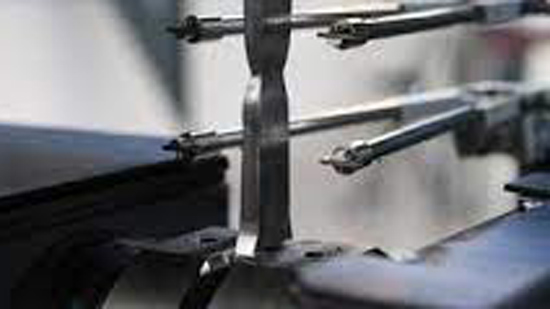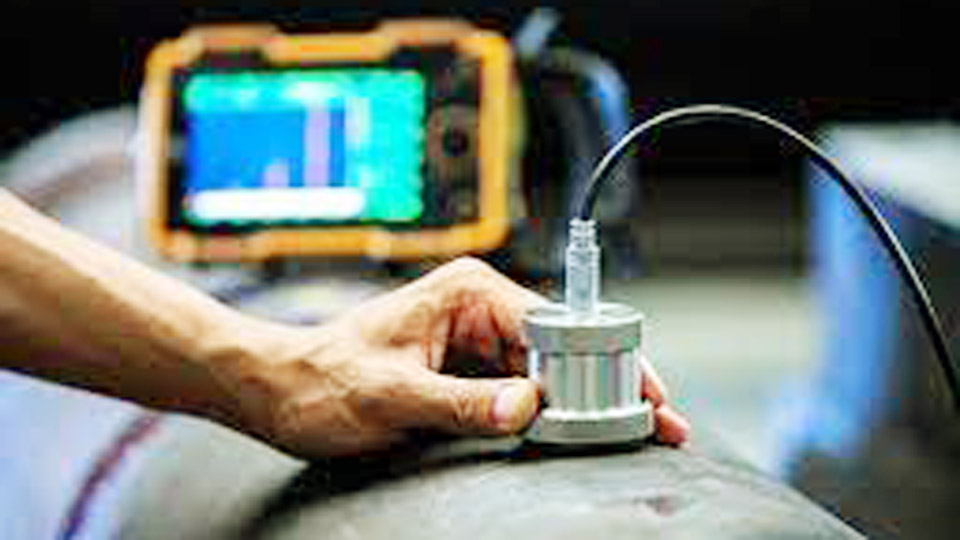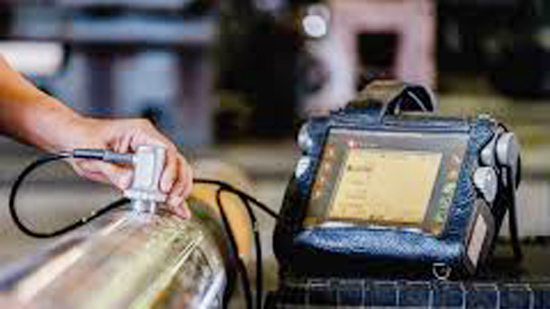Are you curious about how destructive testing works and its advantages and limitations? Well, you’ve come to the right place! In this article, we will delve into the fascinating world of destructive testing and explore its inner workings. Destructive testing is a crucial method used to evaluate the strength and integrity of materials or structures.
By subjecting them to extreme conditions, such as intense pressure or high temperature, engineers can determine their breaking points and performance limits.

Photo by mistrasgroup
While destructive testing provides valuable insight, it also has its limitations, such as the cost involved and the inability to test all components. So, join us as we uncover the secrets of destructive testing and gain a deeper understanding of its role in various industries.
Destructive Testing: Unveiling Strength and Reliability
Destructive testing is a crucial process used in various industries to understand the strength and reliability of materials and products. By subjecting them to extreme conditions, such as high pressure or intense temperature, engineers can identify potential weaknesses and vulnerabilities.
This testing method involves intentionally damaging or destroying a sample to assess its performance and structural integrity. While it may seem counterintuitive to destroy something to gain insight, destructive testing provides invaluable information that helps enhance product safety and quality.
Advantages of Destructive Testing
Destructive testing offers several advantages that make it an indispensable tool in many industries.
Firstly, it provides accurate and reliable data about a material or product’s performance under extreme conditions. By subjecting samples to rigorous testing, engineers can determine the breaking point, stress limits, and failure modes. This information enables them to make informed decisions about design improvements or material selection.
Secondly, destructive testing helps identify weak points or potential failures early in the development process. By exposing flaws or defects, engineers can address them before the product reaches the market, ensuring customer satisfaction and safety.
Lastly, destructive testing allows for the evaluation of the overall quality and compliance of a product with industry standards and regulations. By conducting tests according to established protocols, manufacturers can ensure their products meet the necessary requirements, preventing costly recalls or legal repercussions.
However, despite its numerous advantages, destructive testing also has its limitations.
Limitations of Destructive Testing
One of the primary limitations of destructive testing is the destruction of the sample itself. Once the testing is complete, the sample is rendered useless, which can be costly, especially when dealing with expensive or limited materials.
Additionally, destructive testing is often time-consuming. It requires careful planning, preparation, and execution, which can significantly impact project timelines. The need to analyze the results and potentially repeat the testing further extends the overall duration.
Destructive testing may not always accurately simulate real-world conditions. While engineers strive to replicate operating environments, certain factors, such as time constraints or limited resources, may prevent an exact replica. This discrepancy can lead to deviations between testing results and actual performance.
Considering the cost, time, and sample limitations, it is crucial to carefully evaluate whether destructive testing is the most appropriate method for a specific situation.
Common Methods of Destructive Testing
Several common methods are used in destructive testing, each tailored to assess specific characteristics or properties. Some of the most widely used methods include:
Tensile Testing
This method measures the strength and ductility of a material by subjecting it to tension until it fractures. It helps determine the maximum load a material can withstand before breaking.
Impact Testing
Impact testing assesses a material’s ability to absorb energy under sudden loading conditions. It involves striking a sample with a pendulum or hammer and measuring the energy absorbed during fracture.
Hardness Testing
Hardness testing evaluates a material’s resistance to indentation or scratching. It helps determine its suitability for various applications and provides insights into its strength and durability.
Fatigue Testing
Fatigue testing assesses a material’s ability to withstand repeated loading and unloading cycles. By subjecting a sample to cyclic stress, engineers can determine its endurance limit and potential for failure over time.
These are just a few examples of the wide range of destructive testing methods available. The choice of method depends on the specific requirements of the industry, material, and product being tested.
Industries that Utilize Destructive Testing
Destructive testing finds applications in various industries where the reliability and safety of materials and products are paramount. Some notable examples include:
Aerospace
Destructive testing is essential in the aerospace industry to ensure the structural integrity and performance of aircraft components. From testing the strength of materials used in aircraft frames to evaluating the durability of engine components, destructive testing plays a crucial role in guaranteeing passenger safety.
Automotive
In the automotive industry, destructive testing is employed to assess the crashworthiness of vehicles, evaluate the durability of parts, and determine the integrity of fuel tanks. By subjecting vehicles and components to rigorous testing, manufacturers can enhance occupant safety and vehicle performance.
Construction
Destructive testing is widely used in the construction industry to evaluate the strength and reliability of building materials such as concrete, steel, and timber.
By conducting tests on samples, engineers can ensure that structures meet safety standards and can withstand various loads and environmental conditions.
These industries are just a few examples of where destructive testing is employed. Its applications extend to areas such as manufacturing, oil and gas, nuclear power, and many more.
Safety Considerations in Destructive Testing
Safety is of utmost importance when conducting destructive testing. Engineers and technicians must adhere to strict protocols and guidelines to minimize risks.
Proper personal protective equipment (PPE) should be worn at all times to protect against hazards such as flying debris or toxic substances. Testing should be performed in controlled environments with proper ventilation and safety measures in place.
It is crucial to ensure that the testing equipment is calibrated and maintained regularly to obtain accurate results. Regular inspections and adherence to safety standards are vital for the well-being of the testing personnel and the overall success of the testing process.
Factors to Consider when Choosing Destructive Testing Methods
When selecting a destructive testing method, several factors should be considered to ensure accurate and meaningful results. These factors include:
Test Objectives
Clearly defining the goals of the testing process helps determine the most suitable method. Whether the focus is on material strength, durability, or compliance, aligning the objectives with the appropriate testing method is essential.
Sample Availability
The availability of samples and their size can impact the choice of testing method. Some methods require larger samples, while others can accommodate smaller or more limited specimens.
Cost and Time Constraints
Budgetary limitations and project timelines must be taken into account when selecting a destructive testing method. Some methods may be more cost-effective or time-efficient than others, depending on the specific requirements.
Applicability to Real-World Conditions
Consideration should be given to how well the chosen testing method simulates real-world conditions. This evaluation ensures that the results obtained are representative of the material or product’s performance under actual operating conditions.
By carefully assessing these factors, engineers can make informed decisions and choose the most appropriate destructive testing method for their specific application.
Case Studies Showcasing the Effectiveness of Destructive Testing
Numerous case studies highlight the effectiveness of destructive testing in enhancing product safety and reliability. Let’s explore a couple of examples:
Bridge Collapse Prevention
Destructive testing played a crucial role in preventing the collapse of the Silver Bridge in West Virginia in 1967. By conducting tests on samples from the bridge, engineers identified a critical flaw in the suspension chain, leading to the implementation of safety measures and the prevention of future disasters.
Pharmaceutical Packaging Integrity
Destructive testing is essential in the pharmaceutical industry to ensure the integrity of packaging materials. By subjecting samples to rigorous testing, manufacturers can identify potential weaknesses or defects that may compromise the product’s quality or safety.
These case studies demonstrate the invaluable insights gained through destructive testing and its significant impact on ensuring safety and quality in various industries.
Future Trends in Destructive Testing
As technology continues to advance, destructive testing methods are evolving to meet the changing needs of industries. Some notable future trends include:
Non-Destructive Evaluation
The development of non-destructive evaluation techniques aims to minimize the destruction of samples while still providing valuable data. Methods such as ultrasonic testing, X-ray imaging, and laser-based measurements enable engineers to assess material properties without causing significant damage.
Simulation and Modeling
Advanced computer simulations and modeling techniques allow engineers to simulate real-world conditions more accurately. By combining virtual testing with physical destructive testing, the overall testing process becomes more efficient and cost-effective.
Automation and Robotics
The integration of automation and robotics in destructive testing streamlines the process, reduces human error, and increases testing throughput. This trend allows for faster and more precise testing, enhancing overall efficiency and productivity.
These future trends hold immense potential for further improving the accuracy, speed, and cost-effectiveness of destructive testing.
Conclusion
Destructive testing is a vital tool used in various industries to assess the strength, reliability, and compliance of materials and products. Its advantages, such as providing accurate data, identifying weaknesses early, and ensuring compliance, make it indispensable for enhancing product safety and quality.
Destructive testing also has its limitations, including cost, time constraints, and sample destruction. Careful consideration of these limitations is necessary when deciding on the most appropriate testing method.
By understanding the common methods, industries that utilize destructive testing, safety considerations, and future trends, engineers can make informed decisions and leverage destructive testing effectively.

I’m Darrell Julian, the founder, lead writer, and hands-on welding enthusiast behind ArcWeldingPro.com. With more than 15 years of real-world welding experience, I created this platform to share what I’ve learned in the field, in the shop, and in the heat of the arc.



